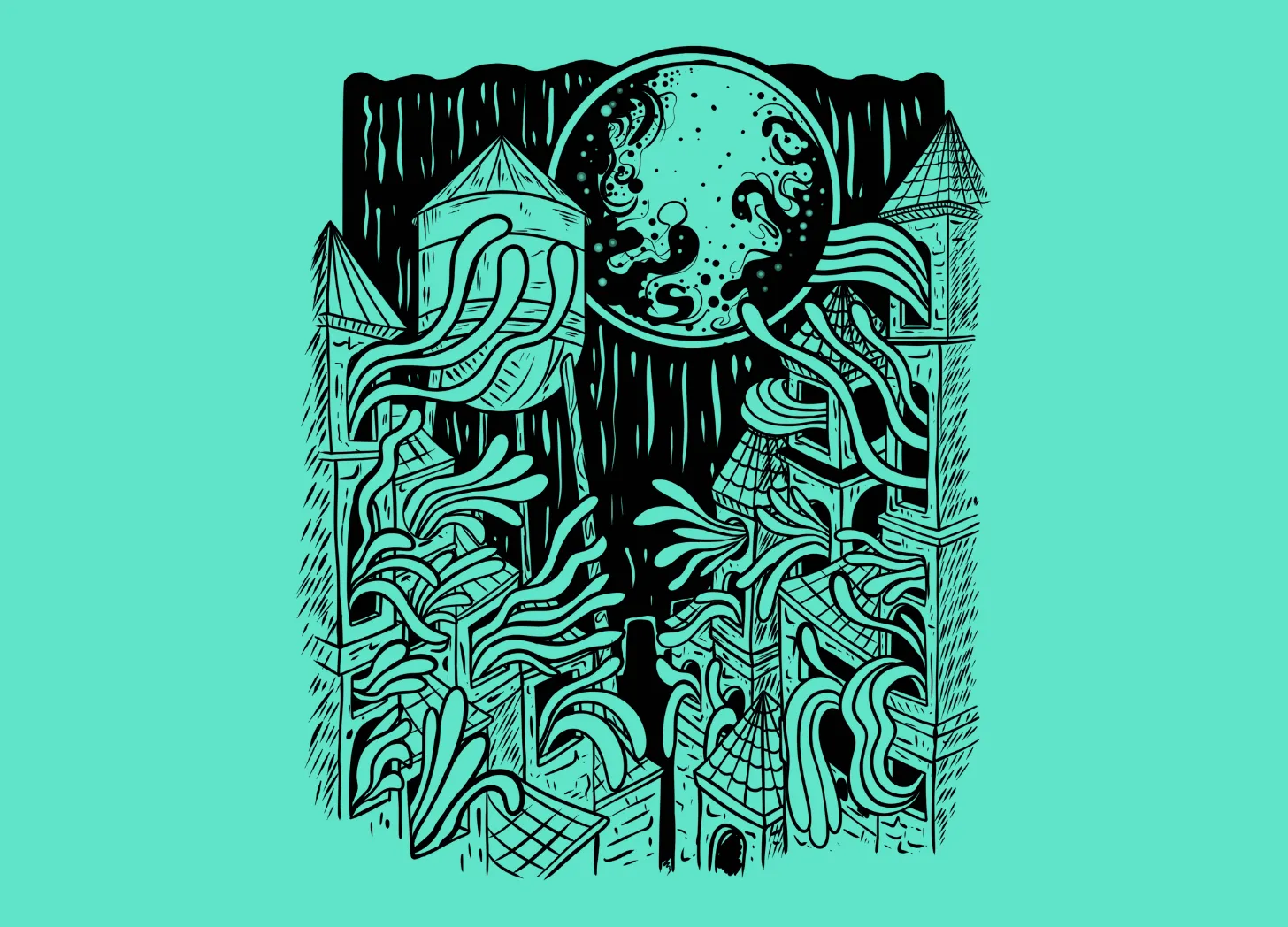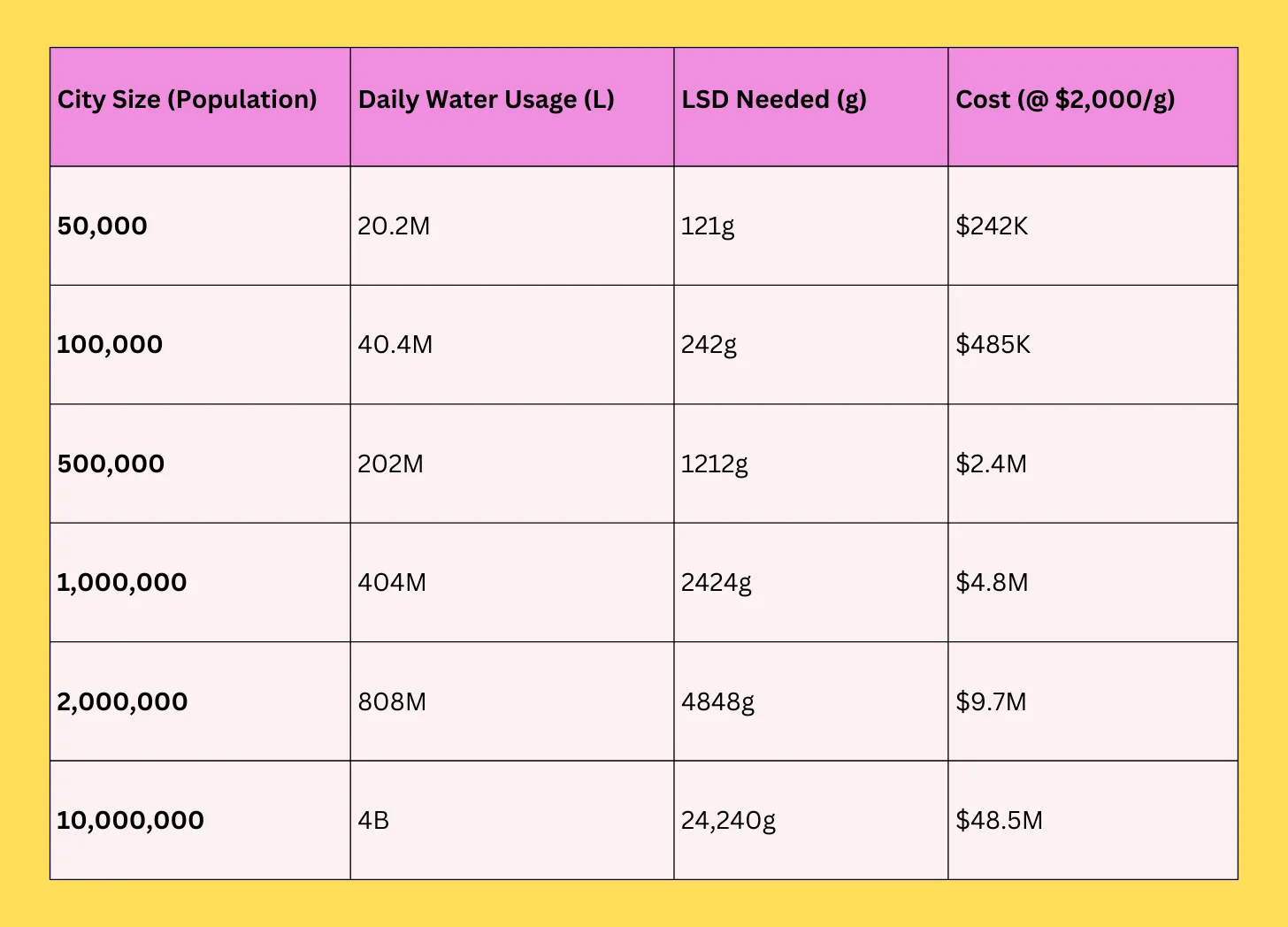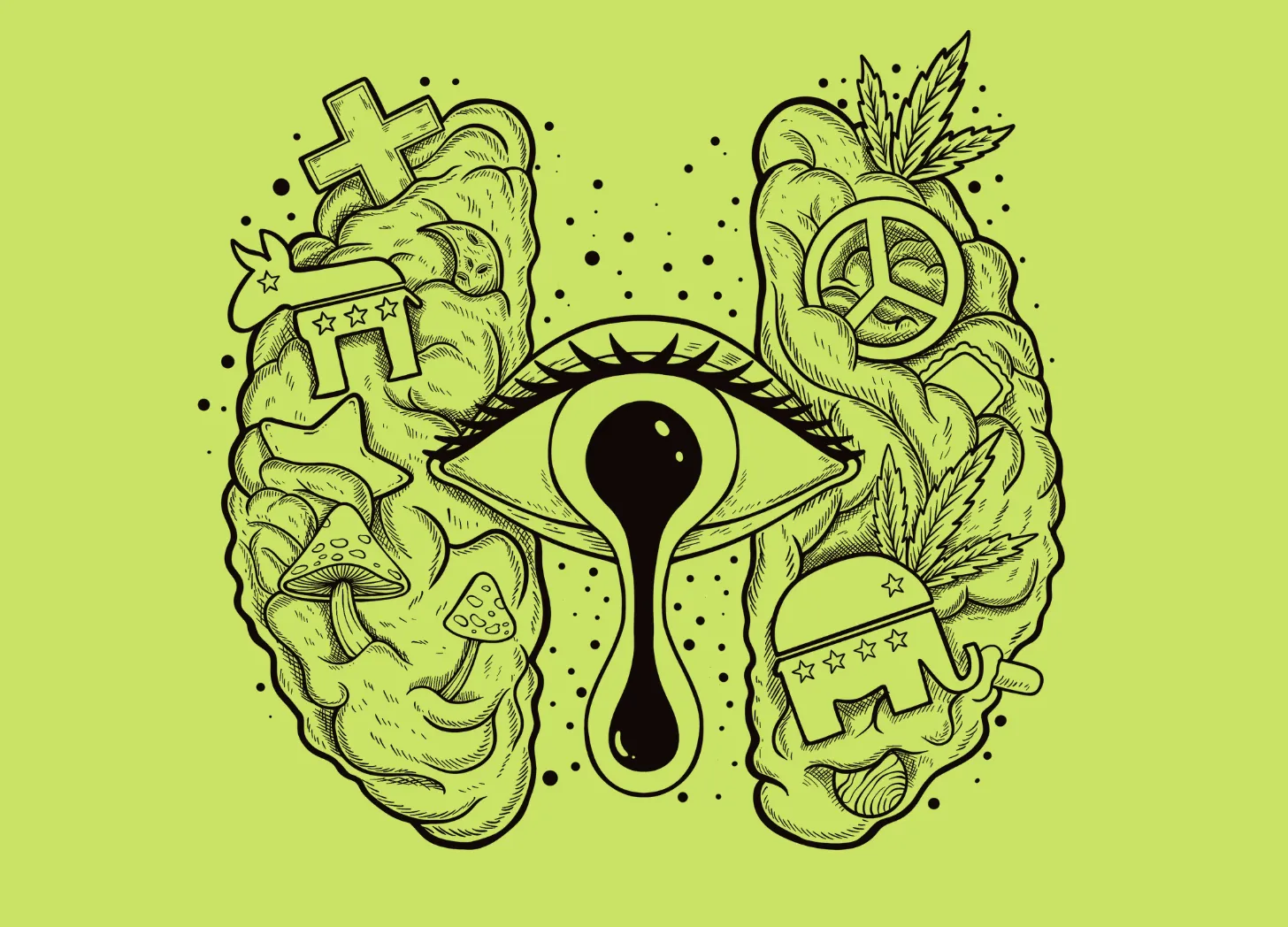-
 @ Tripsitter
2025-06-02 17:39:21
@ Tripsitter
2025-06-02 17:39:21There’s a recurring fantasy in psychedelic circles — whispered at festivals, joked about on forums, and half-seriously invoked in moments of exasperation with the world…
What if we just put LSD in the water supply?
On the surface, the idea almost sounds logical. By forcing an unsuspecting population into the depths of a collective psychedelic experience, people would be compelled to confront their illusions, dissolve their egos, and emerge more empathetic, self-aware, and connected — ultimately leading to a more compassionate, enlightened society.
But for that to work, you have to make a big (and possibly dangerous) assumption — that psychedelics are inherently benevolent.
That if everyone were dosed with LSD — unknowingly and all at once — it would trigger a kind of mass awakening. A spiritual jailbreak. A shortcut to utopia.
Here's why that isn't going to happen…
(This post was originally published on the Tripsitter Newsletter).
The Origins of the LSD-in-the-Water Fantasy
The idea of slipping LSD into the public water supply didn’t come from hippie utopians. It came from the CIA.
As part of the now-infamous MK-ULTRA program in the 1950s and 60s, the CIA tested the viability of LSD as a tool for mind control and psychological warfare. One documented proposal involved contaminating the water supply of an entire town with LSD in order to incapacitate the population.
The goal was simply to "see what happens."
Luckily for the town's unwitting citizens, the plan was eventually abandoned. The reason listed was that LSD is highly unstable in water, especially chlorinated tap water, and ensuring each citizen received an effective dose was close to impossible. One person might receive nothing, another a 10x dose.
The science ultimately didn’t work — but the idea seed had been planted.
The concept has resurfaced many times since then — starting with Ken Kesey and the Merry Pranksters — a rowdy group famous for their “acid tests” — where strangers were encouraged to have a sip of the group's electric Kool-Aid, which was infused with high-dose LSD. The group believed they could deliver mass enlightenment to the world through LSD.
While they never actually spiked a municipal water system, they often joked about it. To them, turning on the whole world was more than just a prank — it was a prophecy.
Over the years, other figures echoed the same idea — some more seriously than others.
In 1966, London Life Magazine ran an alarming interview with a former MP named Dr. Donald Johnson, who claimed that “it is quite feasible that LSD could be used to take over a city or even a country… If it were put into reservoirs, it would disable people sufficiently for an enemy to take control.”
Despite the drama, it never happened. For one simple reason: it wouldn’t work.

Why Adding LSD To The Water Supply Wouldn’t Work
The plan to add LSD to the water supply falls apart on three fronts — it’s chemically unstable in chlorinated water, it's wildly expensive, and it's psychologically unpredictable — sometimes causing people to become more extreme, not less.
1. The Chemistry Doesn’t Work
LSD is undeniably one of the strongest psychedelic compounds, gram for gram, in the world — just one ten-thousandth of a gram (100 micrograms) is enough to trigger a full-blown, reality-melting experience.
While powerful, LSD is also surprisingly fragile.
UV light, heat, oxygen, and chlorine — all common elements in municipal water systems — rapidly degrade LSD, rendering it inactive. This is why your tab of LSD typically arrives both wrapped tightly in tinfoil and in a sealed plastic bag. If you leave your tabs out for even just a few hours, the potency could drop as much as 50%.
Technically, LSD could remain chemically stable in water for around 3 months as long as the pH and temperature remained stable.
However, the main issue is that municipal water supplies are heavily chlorinated — typically around 1–4 ppm. Given that a 10:1 ratio of free chlorine to LSD is enough to neutralize the compound, even standard chlorination levels are more than sufficient to break down over 90% of the LSD within just a few hours.
This makes it virtually impossible to control dosing at the point of delivery. By the time the water reaches someone’s tap, there’s no telling how much (if any) LSD is left — and no way to ensure that any two people receive the same amount.
Between the chlorine, fluctuating temperatures, exposure to sunlight, long pipe systems, and transit time, adding LSD to a public water is simply a waste of LSD.
It's (theoretically) possible that one could add about 10X the normal dose of LSD per 1 ppm of chlorine in order to counteract this issue.
In places like the United States, which typically fall on the high-end of this chlorination range (up to 4 ppm), you'd need to 40X the target dose of LSD for every 1 liter of water.
Other places that use much less chlorine, such as Iceland, Australia, and Germany could get away with far less LSD — but even then, degradation from heat, oxygen, and UV exposure would remain a serious issue.
As you can probably imagine, the amount of LSD you’d need to add to achieve this amount across an entire city’s water supply would cost a fortune.
Let's break it down.
2. It Would Cost An Absurd Amount of Money
Let’s say you really did want to dose an entire town through the water system. How much LSD would you need?
For the LSD to have any significant impact on people, you'd need to provide a full psychedelic dose — a simple microdose wouldn't cut it.
A standard oral dose of LSD is about 100–150 micrograms (μg). That’s 0.00015 grams.
In order to ensure a full dose, you'd want the concentration to be high enough for a full dose in a standard ~500 mL glass of water.
This means the concentration needs to maintain the equivalent of 150 μg of active LSD for every 500 mL of water — or around 300 μg/L.
As we've already covered, LSD breaks down rapidly in chlorinated water. To compensate for degradation, you'd need to increase the dose by 10–40x (depending on the local chlorination rate) — that works out to a whopping 3000–12,000 micrograms of LSD for every litre of water.
That's A LOT of acid.
And it’s not just drinking water you’d be dosing — it’s everything. Showers, toilets, laundry, dishwashers, sprinklers. There’s no way to isolate only the water people ingest. You’d have to flood the entire municipal water system.
To get a better idea of just how much LSD this would require, let’s look at real-world cities and their actual daily water usage:
- Burlington, USA (50K Pop.) — 14.2 million liters/day (322 L/person)
- Sacramento, USA (500K Pop.) — 303 million liters/day (606 L/person)
- Calgary, Canada (1.2M Pop.) — 485 million liters/day (373 L/person)
- London, UK (9M Pop.) — 2,000 million liters/day (222 L/person)
Across these cities, the average per capita usage comes out to around 404 liters per person per day. Obviously, this can vary as hotter, drier places like Sacramento use more water per capita than wetter regions like Seattle.
From this 404 L/person/day estimate, we can extrapolate roughly how much LSD we'd need to dose each person with 150 micrograms of active LSD (including an average 20X degradation buffer):

Note: This is bulk or production pricing ($2000/gram). Street-level LSD sells as high as $100K per gram (or anywhere in between).
By the time you reach a population of 500K or more, the idea becomes not only logistically impossible, but financially absurd — into the millions.
On the high-end of the estimate (assuming the city uses around 4 ppm chlorine and the cost to acquire the LSD is closer to $3000/gram), dosing a city could cost as much as $15M per 1 million people.
3. LSD Doesn't Actually Change Our Minds
Even if some rich eccentric decided to blow millions of dollars to dose an entire population with LSD through the water supply, it still wouldn’t achieve what they were hoping for.
In the 1960s, psychedelics became synonymous with peace, love, and rebellion. The hippie movement embraced the idea that LSD itself was the force behind their anti-establishment ideals. But this narrative overlooked a key truth: LSD doesn’t create beliefs — it magnifies them.
Modern research has shown that far right or left-leaning individuals often become more entrenched in their existing views after taking psychedelics — not more open-minded.
One study found that psychedelics can actually reinforce authoritarian tendencies when taken in certain psychological or cultural contexts. There are just as many far-right psychonauts as there are liberal or spiritual ones.
There's even research showing that LSD (and other psychedelics) can generate completely false insights or beliefs.
Regardless, if psychedelics were inherently utopia-generating, we’d likely have seen one by now.
Humans have been taking psychedelic substances for thousands of years — yet no culture has achieved lasting peace through them (or anything else).
Take the Aztecs as an example — this was a society known to use psilocybin mushrooms ceremonially, and their rulers frequently consulted plant spirits for guidance on matters of war, agriculture, and governance. These were not casual users; they built entire rituals and temples around these practices.
And yet, this is the same society that routinely carried out mass human sacrifice — often in gruesome and ritualized ways.
Just read this account from Bernal Díaz del Castillo’s book The True History of the Conquest of New Spain (1568):
“They strike open the wretched Indian’s chest with flint knives and hastily tear out the palpitating heart which, with the blood, they present to the idols in whose name they have performed the sacrifice. They cut off the arms, thighs, and head, eating the arms and thighs at ceremonial banquets. The head they hang up on a beam, and the body of the sacrificed man is not eaten but given to the beasts of prey.”
That doesn’t sound like a society on the brink of enlightenment.
Other societies like the Eleusinian Greeks were also known for their deep traditions in psychedelic usage and spiritual ceremony — and still, these societies came nowhere close to a utopia in which all people were equal, free, or safe from violence.
So no, LSD won't save us from ourselves. It merely amplifies the stories we’re already telling ourselves — for better or worse.

Psychedelics Are Pluripotent
The notion of an “LSD messiah” — that dosing the world could suddenly awaken everyone to peace and harmony — is based on a flawed assumption: that psychedelics have an inherent moral direction.
Psychedelics are non-specific amplifiers — they don’t implant a particular set of values; instead, they magnify the cultural, political, and psychological contexts already within our minds.
Some might argue that LSD, being synthetic, is somehow disconnected from the moral logic of the natural world — but that’s just the appeal to nature fallacy in disguise: the assumption that if something is natural, it must be good.
So what about our psychedelic plant teachers — things like ayahuasca, magic mushrooms, and mescaline? Are they guides toward truth, or cultural and moral relativists?
In a sense, they're both. These compounds are politically pluripotent — meaning they can be absorbed into almost any belief system. Contrary to the idea that psychedelics naturally foster progressive, harmonious societies, research shows that authoritarian and hierarchical ideologies can just as easily assimilate the experience of interconnection.
And not all plants come cloaked in kindness. Datura, borrachero, and other deliriants have long been used not to enlighten, but to bewitch, confuse, or control. These spirits aren’t here for free love or utopia — they can just as easily tear a person apart as put them back together.
In short, while psychedelics may open the door to new ways of seeing, they do not guarantee a better world. They don’t lead — they amplify. And what gets amplified depends entirely on who’s holding the mic.
There Are No Shortcuts to Utopia
Whether it's through water supplies or one-dose revolutions, there is no magic button for enlightenment. Psychedelics might shake us awake, but they don’t walk the path for us.
They can open doors, offer insights, even dissolve illusions — but integration, growth, and change still require effort and intention. If psychedelics are teachers, we're still the ones who have to study, reflect, and apply the lessons they give us.
There’s no skipping the work. No molecule will save us from ourselves.